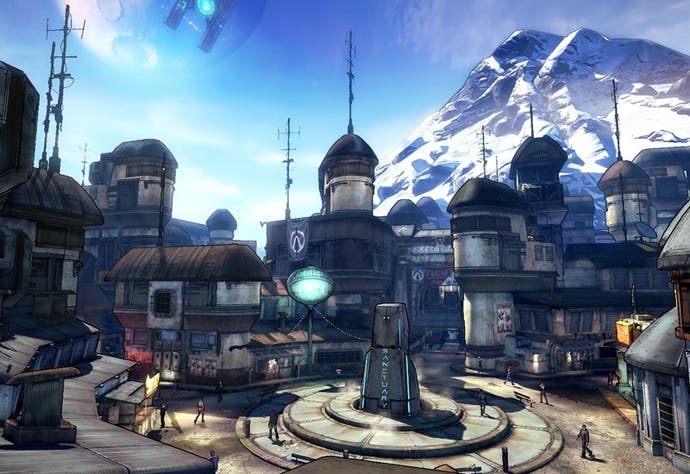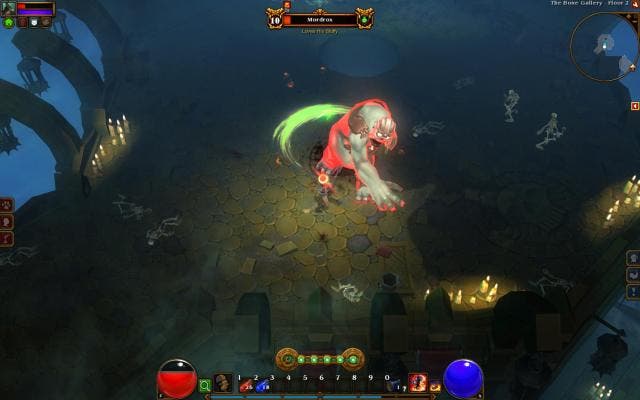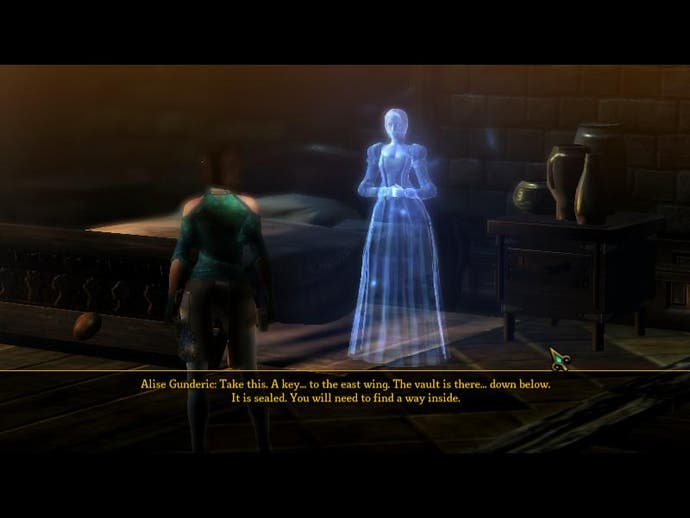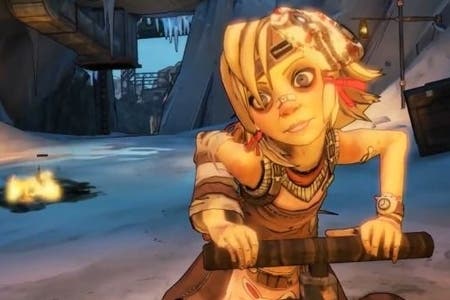Would you like any side quests with that?
For Borderlands 2 and Torchlight 2, the greatest adventures often lie outside of the campaign.
This autumn is passing in a wonderful swirl of loot and of levelling. Divided between Torchlight 2 and Borderlands 2, I'm picking over weapon drops, sifting my inventory, and assigning skill points and ember chips from rosy dawn to misty dusk.
While Runic's game favours maces and wands and Gearbox's is more concerned with pistols and rocket launchers, it's not hard for the two adventures to blend a little, of course. For one thing, both offer frantic action and near endless chains of rewards. For another - and this seems to be a fairly common refrain - both save their most entertaining content for their side quests.
This last point seems interesting, actually, and it's made me re-evaluate a handful of RPGs from the past, too. The new Torchlight and Borderlands games both send you on main campaigns that have you fighting to save the world, more or less. Why is it so easy to get distracted?

A big part of the answer, of course, is that we're always fighting to save the world, or the galaxy, or the fate of the entire universe. The Reapers are coming, the Covenant are coming, Diablo's coming, the British are coming. We know these arcs so well, and we also know how these things often turn out: the party is gathered and the super-weapon is readied, or maybe there's a last minute suicide mission behind enemy lines. Frequently, it's a bit of everything, but regardless of happens with the detailing, the end result is generally the same: onwards to the heart of the trouble, stand by for a bit of quick monologuing, and then we're out in a blizzard of QTEs.
I don't mind this structure, really. It moves things along pretty swiftly, and it manages to be strangely comforting in its bombastic excess. It's nice to step away from it occasionally, though, and it's nice to venture off-road a little bit. Ah, the side quest!
And so side quests are, amongst other things, a chance to see game designers trying to tell different stories for once, whether they're riffing on 1980s movies, as both Torchlight 2 and Borderlands 2 do in their own distinct ways, or just exploring a different side of heroism. Torchlight 2 offers a lot of scope for small-scale heroics, for example: I know you're saving the world, but can you stop for a second to save my wife, my friend, my husband? It all amounts to the same kind of progression as saving the world, perhaps - and it certainly continues the rich theme of smacking skeletons into dusty fragments - but it somehow feels subtly different. It's more personal, more comprehensible. It's perhaps more heroic?

Then, of course, there are the times when heroism doesn't come into it at all, and Borderlands 2 in particular is riddled with this sort of stuff. Most of the game's very best side quests shouldn't be spoiled, but it's at least worth prodding you in the direction of Claptrap over in Sanctuary, who will give you XP in return for, well, something that's definitely unique. Then there are the missions you receive over at Tiny Tina's horrible hideaway. Hard to feel too good about any of that, good buddy, but it does score you a sweet - and very useful - corrosive SMG.
It's great to see designers letting loose like this, and it's interesting that they often do it with a sense of passion and colour and humour that can disappear when you're up against the headline villains and their screen-filling doomsday machines. Dungeon Siege 3 has a perfectly acceptable main campaign, for example, but my favourite section in it - and the only part of the game I remember in any real detail - is completely optional. It's a tour through a delightfully Disneylandish Haunted Mansion named Gunderic Manor, where the torches flicker and spark with spooky green light, and an entirely domestic kind of spectral narrative unfolds.

Side quests often have a kind of shaggy dog story wit to them, as with An Unexpected Voyage in Oblivion, which sees a night spent in a floating pub leading you out to sea and a fight with hijackers. They're often surreal: just think of Dark Souls' painted world - an entire self-contained area that lurks behind a mural. They're frequently rather clever, too. Remember Chrono Trigger's side quests? They played brilliantly with the game's time-shifting mechanics, allowing you to fix problems in the past and then hop forward to the future to see the butterfly effect at work. That's the kind of pay-off that goes well beyond a set of rare +10 trousers and a handful of coins.
Side quests helped make Shenmue's Yokosuka so strangely convincing, and allowed Final Fantasy 12's design team to commemorate the departure of director Yasumi Matsuno with an almost unkillable boss. Granted, this is in danger of devolving into a list of my favourite side quests at this point, but the fact that it could devolve like that is a handy indicator of how rich side quests can be.
At their worst, sure, side quests are just grinding and waypoints, perhaps: just backstory, just toil, just content. At their best, though, they help define their games in a manner that the main storyline rarely can, offering the vigour and charisma of a quick sketch on a napkin, and providing the kind of energy that often gets lost when the final drawing's been polished up in Photoshop.

